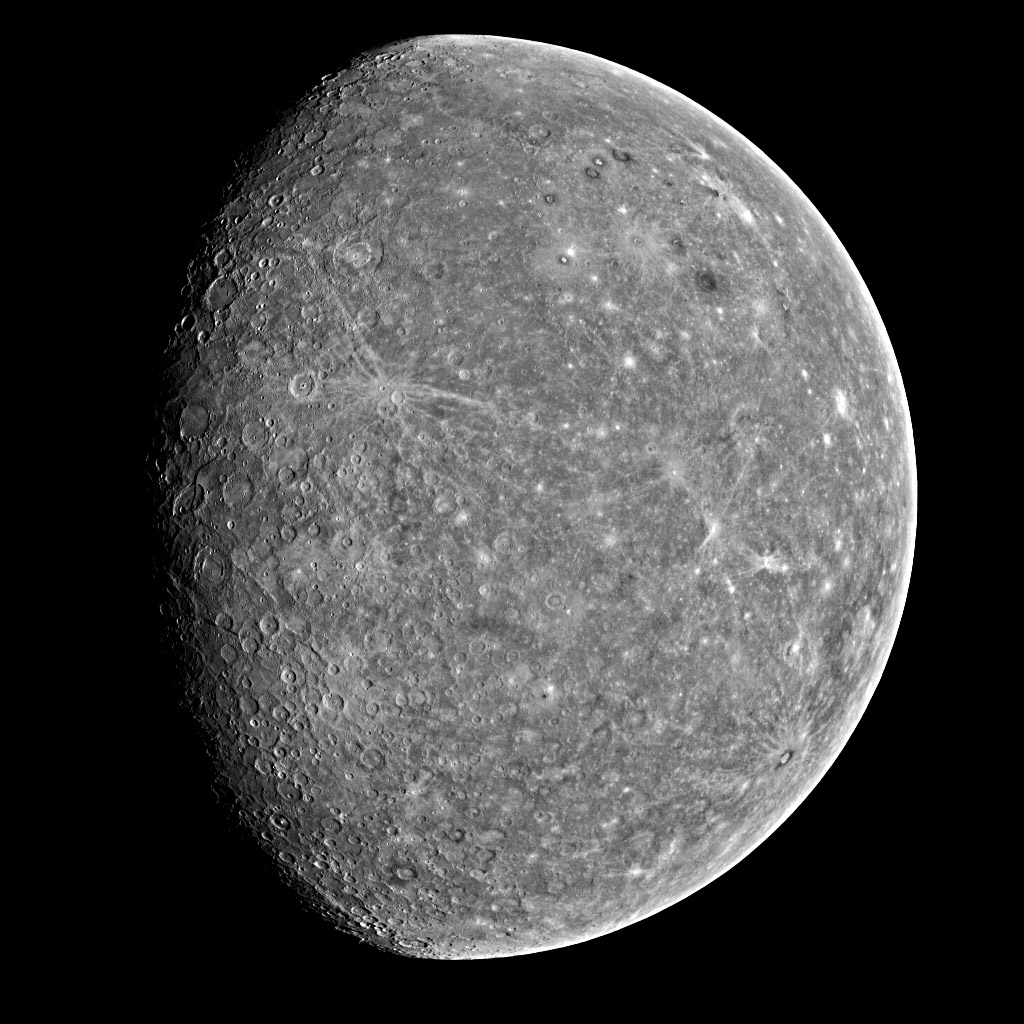LPOD Jan 16, 2008
NOT THE FARSIDE

the first view of Mercury from the Messenger flyby; enhanced by CAW
The Messenger spacecraft was apparently very successful in imaging Mercury during its fast flyby on Jan 14. Unfortunately the playback of the data takes a long time, and only one wide angle overview has been released so far. But it shows much of the hemisphere that wasn't imaged when Mariner 10 flew pass the planet in 1974 and 1975. We see a landscape somewhat like the lunar farside that is full of impact craters and lacks maria, but an expert would never confuse Mercury with the Moon. Mercury's craters appear to be shallower than lunar ones, and the spaces between the craters seem to be filled more with light hued-plains than is common on the Moon. Another characteristic feature of Mercury are scarps that cut across the surface - one is visible near the terminator just below the middle of the image. On the Moon most scarps are associated with subsidence of impact basins - on Mercury they seem to have resulted from a planet-wide reduction of radius. Why didn't the Moon's cooling do the same? Another difference from our Moon is the prominence of two-ring impact basins on Mercury - one is just above the scarp, and another is about 1/4 from the top and it has a bright inner rim. Mars also has a number of two ring basins. Why doesn't the Moon have more? Schrödinger is the most prominent lunar example. Mercury has a number of bright rayed craters, and some - like the biggest one here - have asymmetrical ray distributions that suggest oblique impact angles. A completely new feature are the dark-rimmed craters clustered near the upper right of the image. The press release caption says that these are within the Caloris Basin, discovered by Mariner 10. These do not seem to be dark-ray craters - like the Moon's Dionysius. The resolution of this image is only 10 km, there will be many more from the narrow angle camera with up to 18-meter resolution. Finally we will have excellent images to look for volcanic features (sinuous rilles and dark halo craters), globally map the faulting, and to search for more large impact basins. All of these new data will help better understand planetary landform formation and modifications. Our understanding of the Moon should be improved by what we learn of Mercury.
Chuck Wood
Note: LPOD will return to the Prom. Laplace rille tomorrow - unless something else really exciting happens!
Related Links
Messenger website